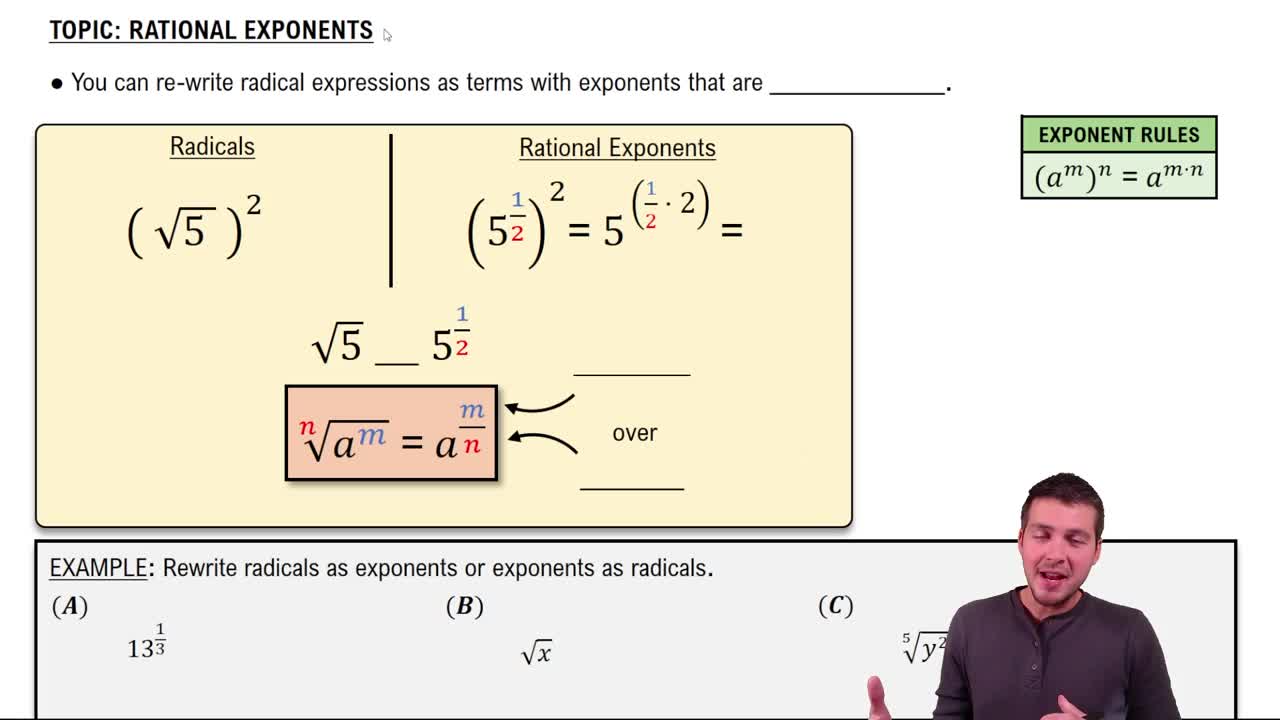Here are the essential concepts you must grasp in order to answer the question correctly.
Exponents and Radicals
Exponents represent repeated multiplication of a number, while radicals are the inverse operation, representing roots. For example, an exponent of 2 indicates squaring a number, while a radical with an index of 2 (the square root) finds a number that, when squared, equals the original. Understanding how to convert between these forms is essential for solving problems involving powers and roots.
Recommended video:
Order of Operations
The order of operations is a set of rules that dictates the sequence in which mathematical operations should be performed to ensure consistent results. The common acronym PEMDAS (Parentheses, Exponents, Multiplication and Division, Addition and Subtraction) helps remember this order. Applying these rules correctly is crucial when simplifying expressions like 27^2/3.
Recommended video:
Performing Row Operations on Matrices
Evaluating Expressions
Evaluating expressions involves substituting values into an expression and performing the necessary calculations to find a numerical result. In the context of the question, this means converting 27^2/3 into radical form and then calculating its value. Mastery of this concept allows students to solve various algebraic problems effectively.
Recommended video:
Evaluating Algebraic Expressions



